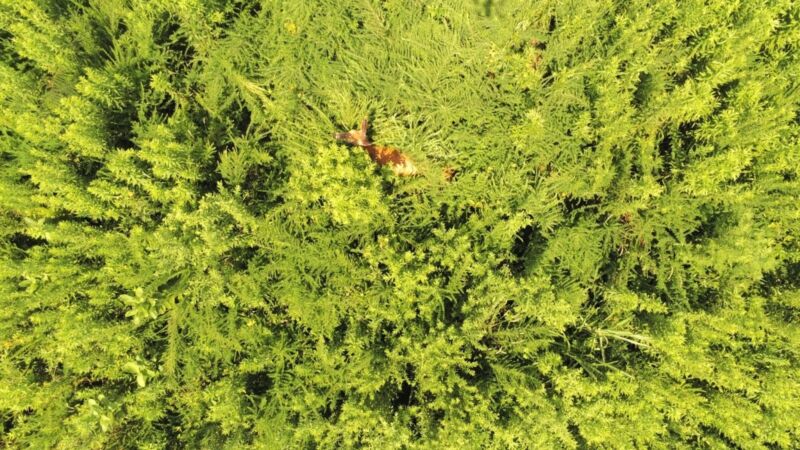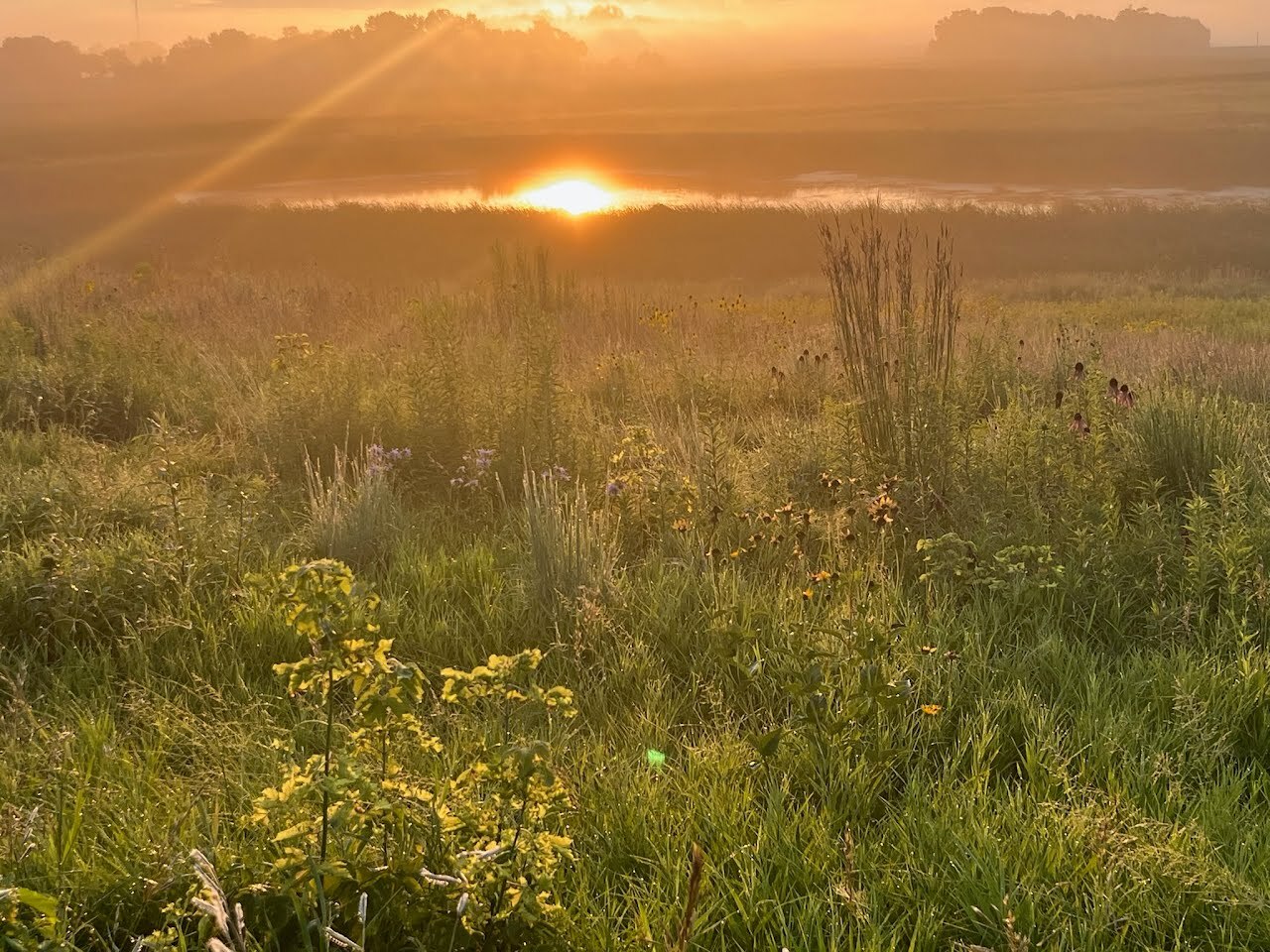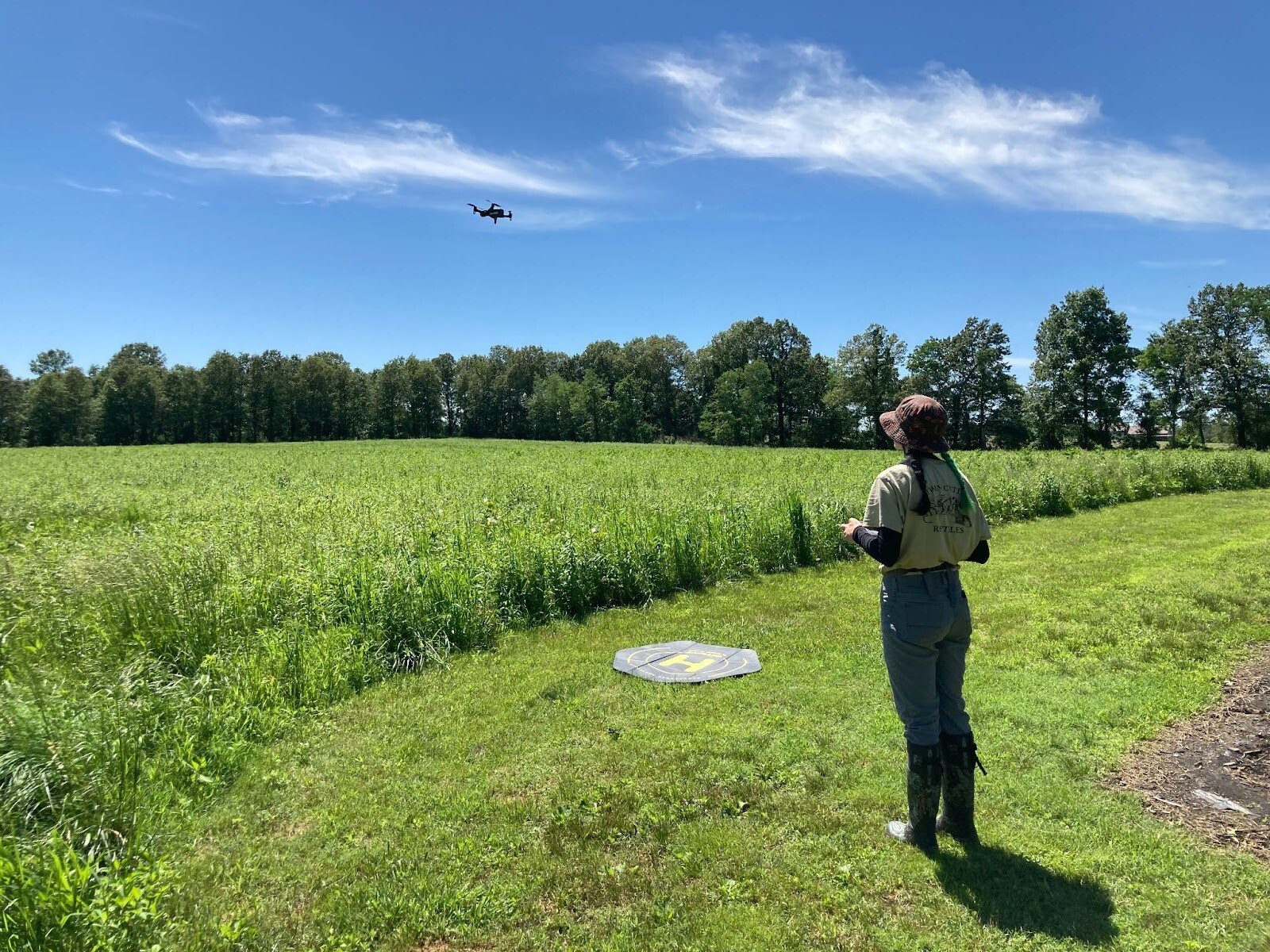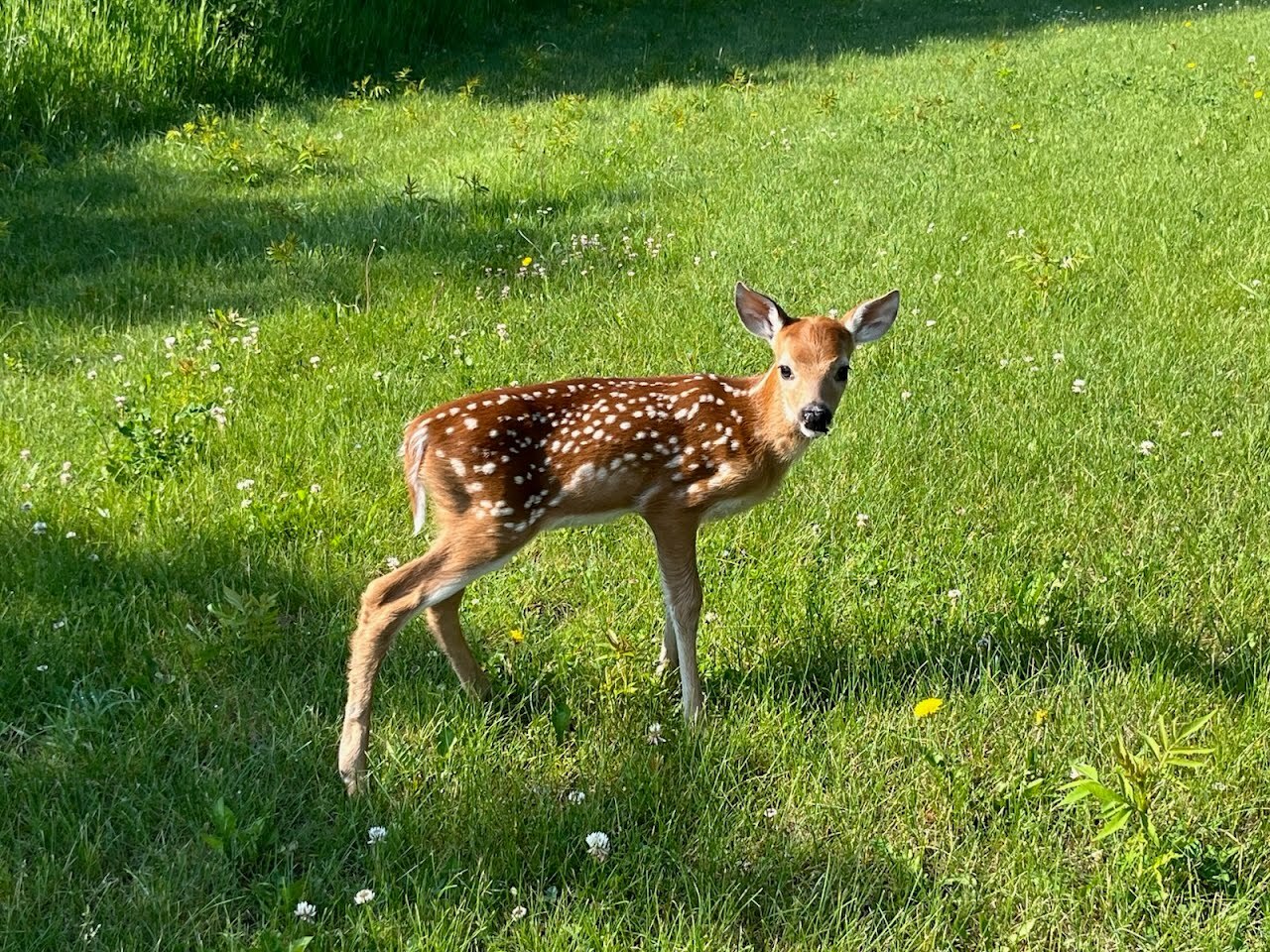
When Minnesota landowner Todd Bollig walks his Conservation Reserve Program (CRP) enrollment, he watches the seasons progress, noting how “everything changes almost weekly: different birds, flowers, grasses. It blows me away how much wildlife there is now.”
Chris Naas, a landowner in Kentucky, credits his honeybees as the main motivation for enrolling in CRP. He enrolled in CRP’s pollinator habitat practice (CP42) to ensure a steady supply of floral resources for the entire growing season. He regularly sees his honey bees using the flowers in his field and is pleased with the outcome so far, saying, “I have not been disappointed that we did it at all.”

Though they live hundreds of miles apart, Todd and Chris are both enrolled in the same federally funded program, the USDA’s Conservation Reserve Program. Funded through the Farm Bill, CRP provides private landowners with financial assistance to convert highly erodible or environmentally sensitive cropland to vegetative cover. Providing financial incentives for private landowners to create and maintain wildlife habitat can be a key piece of the puzzle to achieving these large-scale conservation goals, not only for monarchs but for all wildlife.
The program, established in 1985, aims to improve water quality, prevent soil erosion, and reduce loss of wildlife habitat. These key benefits provide a public service, safeguarding the nation’s natural resources. For example, excessive phosphorus is a key factor contributing to harmful algal blooms in US freshwater systems; in 2014, a harmful algal bloom shut down the water supply for half a million people in Toledo, OH, for three days. CRP enrollments can reduce phosphorus runoff by 86%, compared to cropped land. In 2017 alone (the last year for which these data were made available), CRP retained 192 million tons of sediment on land and out of waterways, and sequestered 34 million metric tons of CO2.
The reasons landowners choose to enroll, however, may not link directly back to the program's objectives. Some may be more interested in the indirect benefits, such as providing better hunting or birdwatching opportunities, supporting pollinators, or finding financial predictability instead of farming cropland that may not offer reliable or consistent yields. Regardless of the motivation, these interests ultimately intersect at habitat improvement and result in indirect benefits to wildlife both on and off the enrolled acres.
Since 60% of all land in the U.S. is private land, and a majority of that land is farms or ranches, it's important to understand the magnitude of benefits provided through this program to maximize the impacts of program funds. When it comes to monarch and pollinator conservation, MJV’s “all hands on deck” approach recognizes the need for engagement across all land use sectors and, importantly, the critical role of private lands conservation.
MJV’s surveys on CRP lands
To maximize the benefit to wildlife and the public and ensure efficient government programming, the USDA has invested in research to monitor and evaluate the outcomes of CRP that can inform policy. Monarch Joint Venture is currently funded through this program to measure key indicators of habitat quality across the Midwest and central U.S.

This project aims to develop a consistent, scalable approach for monitoring CRP habitat outcomes, combining remote sensing technology with field-based surveys to assess milkweed availability, floral resources, and pollinator and bird use across different regions, practices, and management histories.
We collect these data using four main tools:
Habitat surveys: Map milkweed stems, floral resources, and vegetative cover via aerial images obtained from drones.
Monarch surveys: Document monarchs, specific habitat features, and how they're using that habitat via the Integrated Monarch Monitoring Program.
Pollinator surveys: Document the timing, abundance, and diversity of pollinators using a visual survey.
Bird surveys: Document the timing and richness of bird species, using acoustic recording units.
By conducting multiple survey approaches to paint a broader picture of CRP outcomes, MJV is demonstrating that our work is about more than monarchs. It’s about every pollinator diligently sipping nectar or collecting pollen in the prairie. It’s about the birds supported by these ecosystems, which in turn help spread the seeds of future blooms. It’s also about the waterways that flow cleanly because native plants have helped filter sediment and contaminant runoff, protecting resources locally, benefitting those enrolled in these programs and their communities.
Shared benefits for landowners and wildlife
For Todd in Minnesota, the transformation is both visible and audible. Since enrolling his land in CRP, he’s seen erosion stop, native plants thrive, and pheasants nest on his property. He often finds himself just hiking through the fields, listening to the life around him.
“It’s about being able to experience and appreciate nature on my land,” he says. “I’ve converted quite a bit of farmland to CRP. I might make more money cropping, but the other benefits far outweigh that small loss in income.”
His neighbor, surrounded by cornfields, has remarked on the contrast, Todd’s fields are full of buzzing bees, fluttering butterflies, and singing birds. Todd puts it simply: “So much more life."

In Kentucky, Chris shares that same sentiment. After years without seeing quail on his property, he’s now hearing their calls again. “I do see a whole lot more wildlife, many more butterflies than we used to ever see. There’s always a lot of good cover out there, and we have been starting to see quail again. We went for a long period of time that there were no quail around here.”
For Chris, enrolling in CRP was primarily about supporting his bees and creating space for wildlife, with the added benefit of bringing more financial stability to his operation. Compared to the year-to-year uncertainty of farming, the program offers a steady, predictable return that helps even out the ups and downs of crop-dependent income.
Why this research matters
CRP lands provide essential habitat not only for monarchs, but also for bees, grassland birds, and countless other species that depend on these lands. By combining drone technology, field surveys, and landowner perspectives, MJV’s research on CRP enrollments is helping reveal how conservation investments are making a measurable difference and how future programs can build on those successes.
To date, the MJV team has already flown over 1,200 acres in four states. Where acoustic recording units were deployed (Minnesota only), we have confirmed at least 139 bird species. Field surveys showed an average of five monarch larvae per 100 milkweed plants searched, and pollinator surveys show a wide variety of bees and butterflies across all enrollment types. As this study continues, MJV and partners will keep exploring how conservation programs can implement efficient monitoring to support adaptive management and maximize the benefits of public programs to people, lands, and wildlife.
